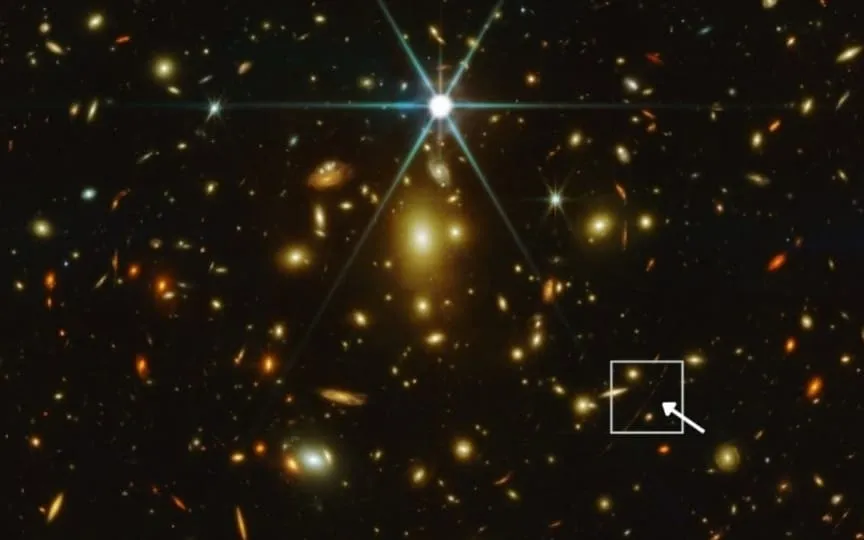NASA Shares Image of Farthest Star Captured by James Webb Space Telescope
NASA’s James Webb Space Telescope, following the legacy of the renowned Hubble Space Telescope, has observed the most distant star ever identified, named Earendel. Initially spotted by the Hubble Space Telescope, this star has now been closely examined by Webb’s specialized camera, NIRCam, unveiling its nature as a scorching and brilliantly luminous B-type star, surpassing the temperature of our Sun.
A star hotter than the sun
Earendel is in the Sunrise Arc galaxy, which is so far away that we can only see it due to a trick of nature and technology. This trick is called gravitational lensing. Webb was able to look at Earendel thanks to a huge galaxy group called WHL0137-08, which bends space, making distant things appear larger.
Most of the galaxy looks like replicas due to this bending, but Earendel appears as just a single point of light. The researchers found that Earendel is very small, about 4000 times smaller than what we would normally be able to see. This makes it the most distant star ever seen, born just a billion years after the Big Bang.
Gravitational lensing
Earendel’s size suggests a possible companion star that Webb was able to detect because it stretched the light to a color that Hubble could not see.
Webb’s fine camera also showed us the Sunrise Arc galaxy in detail. It is the most magnified baby galaxy ever, where the young and old stars are tiny dots. Earendel sits in the center of this galaxy, and it helped scientists learn about the constellations of our own Milky Way a long time ago.
Astronomers continue to study Earendel and the sunrise arc with Webb’s special camera to learn more about the galaxy’s structure and location. Webb found a few other distant stars using this technique, but none as distant as Earendel. These discoveries are like opening a new cosmic door for scientists to study the early universe and its baby stars. The team hopes this could lead to the detection of the first stars made of the universe’s basic elements: hydrogen and helium.




